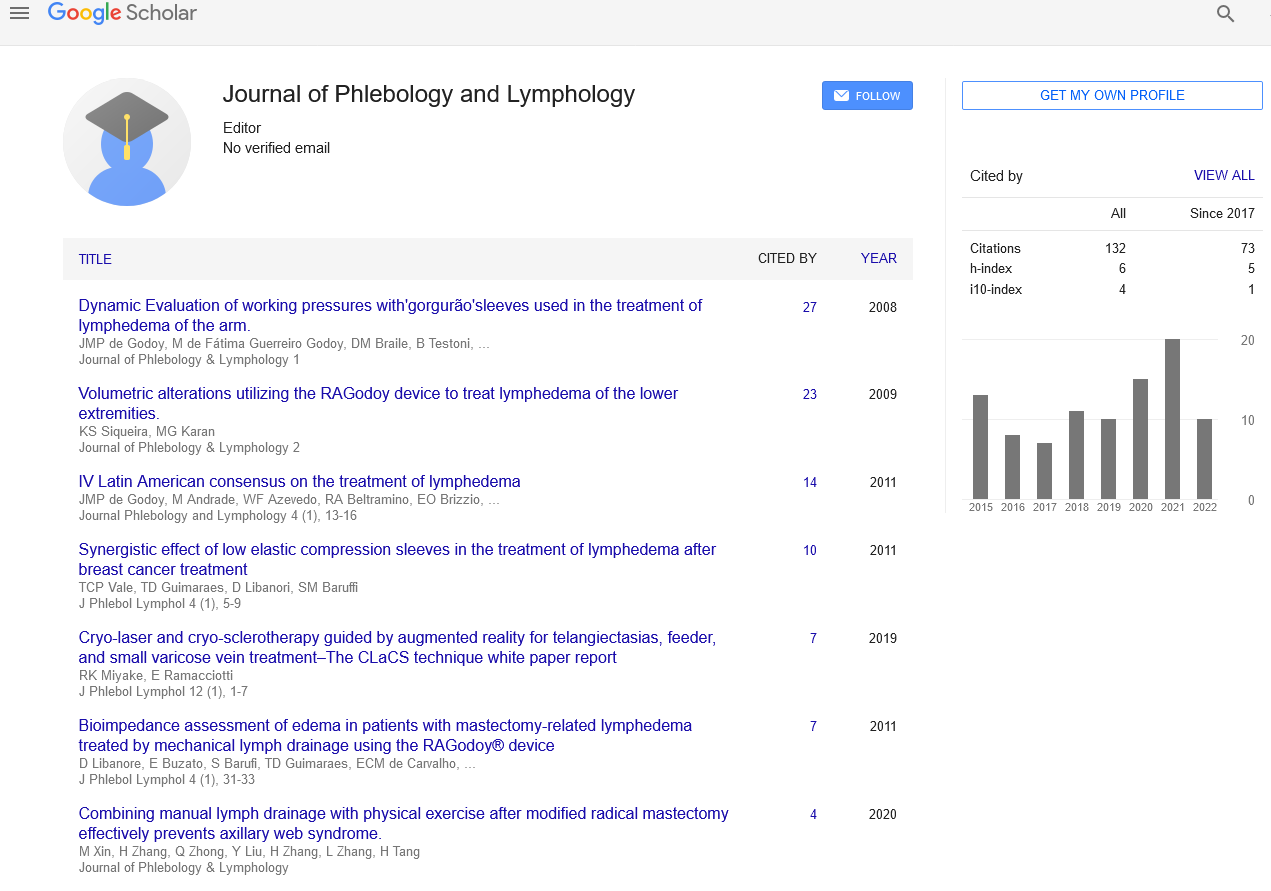
Sign up for email alert when new content gets added: Sign up
Abstract
Phase angle in the assessment of intensive outpatient treatment of primary lower limb lymphedema
Author(s): Jose Maria Pereira de Godoy*, Esteban Ignacio Fortuny, Henrique Jose Pereira de Godoy and Maria de Fatima Guerreiro GodoyIntroduction: Lymphedema is a clinical condition resulting from the accumulation of macromolecules in the interstitial space that leads to an accumulation of fluids. Objective: The aim of this study was to evaluate changes in the phase angle during the intensive treatment of primary lymphedema of the lower limbs. Methods: Using the phase angle of bio impedance, the intensive clinical treatment of primary lower limb lymphedema was evaluated at the ClÃnica Godoy in 2013 and 2014. The participants were 15 male and 40 female patients with a mean age of 40.43 years (range: 25-73; median: 37 years). Only patients with stage II and III primary lymphedema were included in this study; patients with stage I lymphedema and those with edema due to other causes were excluded. Diagnosis was based on patient history and physical examination. Patients were submitted to intensive treatment consisting of 8 hours/day of Mechanical Lymphatic Therapy – lymph drainage using an electromechanical device that performs ankle flexion and extension – together with 15 minutes of cervical stimulation and a grosgrain stocking alternated with elastic bandages as compression therapy. The phase angle was evaluated using the In Body S10 bio impedance apparatus before and after five days of treatment at frequencies of 5, 50 and 250 kHz. The Kruskal-Wallis and all pairwise comparisons (Conover-Inman) tests were used for statistical analysis with an alpha error of 5% being considered acceptable. Results: Significant improvements in the phase angle were detected at all frequencies (Kruskal-Wallis: p-value <0.005). Conclusion: The cellular pattern of lymph edematous limbs as evaluated by the phase angle of bio impedance improves with the treatment of lymphedema.
Full-Text | PDF




